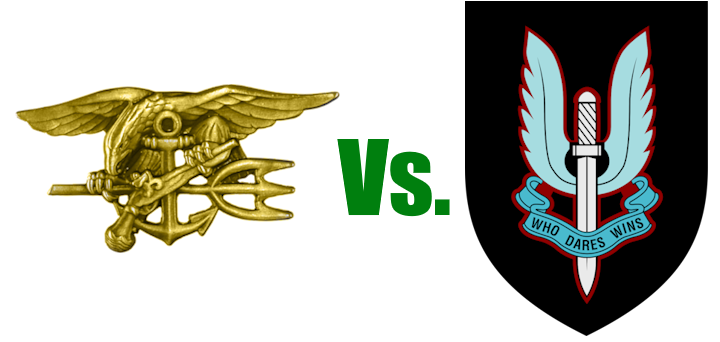Navy SEALs vs SAS?
The most elite Special Ops force in the world is usually narrowed down to these two choices.
Navy SEALs are the most notorious Special Operations force in the United States.
Meanwhile, the British SAS is considered the European equivalent of the U.S. Navy SEALs.
Discover 8 similarities and differences between Navy SEALs and British SAS.
Related Article – 18 Most Elite Special Forces Units In The World
Table of Contents
Navy SEALs vs SAS: Similarities & Differences
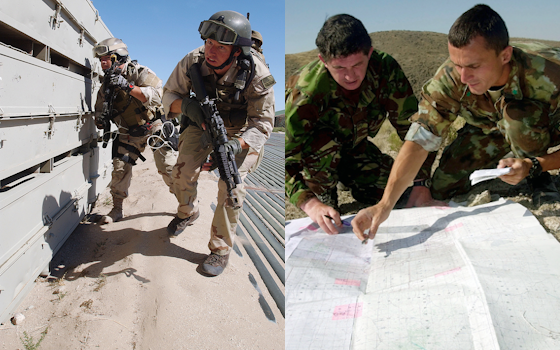
Who wins the debate: Navy SEALs or SAS?
The two special operations forces are widely considered by most to represent the most elite in the world.
Navy SEALs and British SAS both implement strict training programs and selection standards.
For this reason, most consider British SAS and U.S. Navy SEALs among the best for performing high-risk and dangerous covert operations.
Navy SEALs and British SAS have many similarities as well as several noteworthy differences (more information, below).
As a result, these special forces rival each other in many regards while also providing direct assistance.
In fact, both U.S. Navy SEALs and British Special Air Service (SAS) were instrumental during the joint conflicts in Iraq and Afghanistan.
So, while having the Navy SEALs vs SAS debate makes for an intriguing conversation, these commandos are more allied forces than anything else.
Navy SEALs
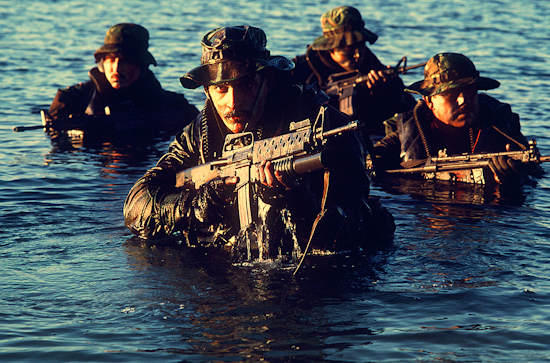
The United States Navy Sea, Air, and Land (SEAL) Teams are among the most elite special forces in the world.
For starters, even people who do not know much about the U.S. military are familiar with Navy SEALs.
Navy SEALs perform special operations in a wide range of exotic and dangerous environments.
SEALs usually are ordered to capture or eliminate high-level targets or gather surveillance and intelligence behind enemy lines.
These elite, small-team units are hand-selected after surviving intense military training (see, below).
Furthermore, some Navy SEALs are selected for the elite CIA Special Operation Group (SOG).
The motto of U.S. Navy SEALs is “The only easy day was yesterday.”
Recently, the most high-profile achievement of Navy SEALs was Operation Neptune Spear, which resulted in the death of Osama bin Laden.
Special Air Service (SAS)
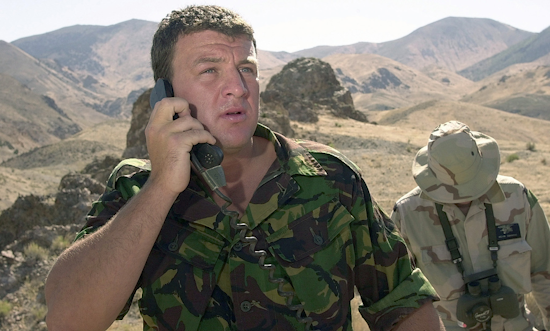
The British Special Air Service (SAS) is one of the original elite special forces.
The regiment was established in 1941 and transformed into its own military corps by 1950.
Today, British SAS specializes in several different roles including counter-terrorism, hostage rescue, and covert reconnaissance.
The Special Air Service (like its counterpart, the British Royal Navy SBS) generally performs operations involving highly classified information.
As such, not everything is known about the two elite special forces.
Nonetheless, the British Special Air Service Regiment first gained notoriety after the successful rescue of hostages during the 1980 Iranian Embassy siege.
The British SAS adheres to the motto “Who Dares Wins” and also features two Army Reserve components.
Related Article – 6 Military Mottos For Each Branch Explained
Navy SEALs vs SAS Similarities
Before diving into what makes the two special forces different, first, there are many similarities that they also share with each other:
#1. Purpose
The British Special Air Service (SAS) and U.S. Navy Sea, Air, and Land (SEAL) Teams have a similar purpose.
They are both modeled to represent elite special forces designed to handle a diverse range of covert and combat situations.
The British SAS traces its existence back to World War II (more details, below) and has inspired the creation of several other special forces.
The elite unit tackles numerous roles including counter-terrorism, direct action, intelligence, and covert reconnaissance.
Meanwhile, U.S. Navy SEALs are renowned for amphibious (sea, air, and land) warfare.
As a result, Navy SEALs provide a variety of functions that range from direct action to counter-terrorism to reconnaissance.
The principal Naval Special Warfare Command unit is trained in a variety of climates that range from desert to the Arctic.
Therefore, both elite special forces have much crossover in terms of operational function and purpose.
More importantly, British SAS and Navy SEALs often assist each other during joint operations.
Here’s an example of this happening:
Afghanistan and Iraq are quality examples of how these two unconventional warfare units combined forces to combat international terrorism.
#2. Prestige / Reputation
Navy SEALs vs SAS?
The reality is that both special forces have an incredible reputation.
In fact, many consider British SAS and Navy SEALs among the most elite special forces in the world.
For this reason, the British SAS shares many similarities with U.S. Navy SEALs.
Nevertheless, a more accurate British comparison would be the Special Boat Service (SBS), which also specializes in maritime combat situations.
Still, Navy SEALs and British SAS have much in common, just different areas of expertise.
As a result, they usually complement each other on high-risk, top-secret military operations.
Both Navy SEALs and British SAS have tremendous respect and appreciation for each other.
In general, the British SAS has a reputation for being experts at handling crisis situations such as hostage rescues and barricaded subjects.
British SAS is notorious for its demanding military training program, which has a dropout rate that hovers around 90%.
In comparison, Navy SEALs are legendary and world-renowned.
The DEVGRU unit (SEAL Team 6) is even a specialized unit within an already elite group of special operatives.
Thus, while the two special forces may train in different ways (more details, below) and perform different objectives — they are both considered elite.
#3. Special Operations Military Training
The training of Navy SEALs and British SAS is both similar and different.
There is no doubt about it that most agree the two training programs are among the most difficult and challenging to complete.
In fact, it’s estimated that approximately 90% of Navy SEAL training is comparable to SAS training exercises.
The major difference is execution, as both special forces have different methods of teaching the instructions.
In general, both programs take at least 6 to 12 months to complete basic training and another 1 to 3 years of advanced training.
And, that’s if the candidate graduates from the military training program.
The washout rate for both Navy SEALs and SAS is extremely high (see, Selection Process).
Related Article – Navy SEAL Weapons And Gear
Navy SEALs vs SAS: 5 Differences
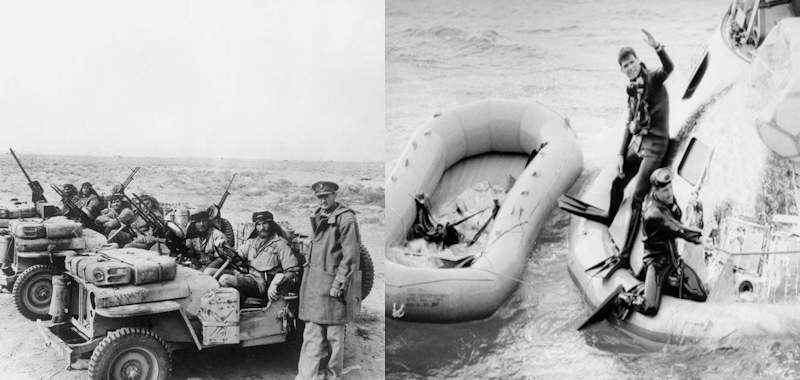
British SAS and Navy SEALs also have many differences regarding training and military operations.
Here are 5 big differences between the two special forces:
#1. History
The British Special Air Service (SAS) is one of the first special forces that was ever established.
British SAS was created in 1941 during World War II.
Since then, it has inspired numerous other special operations units, including the Navy SEALs.
While Navy Sea, Air, and Land (SEAL) Teams were not officially established until 1962 by John F. Kennedy, they also have roots in WWII.
For this reason, the Navy Amphibious Scout and Raider School existed during WWII to train operatives.
Today, the origins of both special units are comparable, although SAS was officially established 20 years earlier.
In the past, British SAS and Navy SEALs have been involved in countless international operations, many of which are top-secret.
However, it’s known that they’ve been involved in every major modern conflict since the Vietnam War.
Currently, Navy SEALs are famous for special operations in, around, and over water.
Whereas, the British SAS thrives in direct action and hostage situations, including land activities like entering enemy compounds.
#2. Requirements
The requirements to join the Navy SEALs or British SAS are exhaustive.
For starters, the special operations unit is not even open to regular British civilians.
Rather, individuals must have already served in the British Armed Forces or soldiers in the British Commonwealth.
However, with that being said, the SAS Reserves do accept civilian applicants so long as they meet other qualifications.
Currently, the selection process is open to British men and women between the ages of 18 to 32.
Moreover, recruits must pass the Battle Fitness Test which consists of a 1.5-mile squadded run that candidates must finish in under 15 minutes.
It’s been reported that approximately 10% of candidates fail training at the Battle Fitness Test.
The applicants must be in outstanding physical condition as previous candidates have died in training (more details, below).
In fact, the British government even requires that candidates complete a liability waiver before they begin the training regimen.
On the other hand, the requirements to become a U.S. Navy SEAL are no cakewalk.
The opportunity is available to U.S. citizens between the ages of 17 to 28, although waivers are available up to age 30 for spectacular candidates.
New recruits are subject to an extensive background check and must possess a clean record.
Furthermore, there is a demanding physical and medical examination.
Eligible candidates must meet the following physical requirements:
- Run 1.5 miles in 10 minutes, and 30 seconds.
- Complete a 450-meter swim in under 12 minutes, and 30 seconds.
- Complete 42 push-ups, 50 sit-ups, and 6 pull-ups.
The Physical Screening Test (PST) is just the first step in a long process toward becoming a U.S. Navy SEAL.
#3. Selection Process
The two special forces each feature some of the most intense military training on the planet.
In fact, the washout rate averages 75% for Navy SEALS and 85% for British SAS.
Nevertheless, the entire structure of each Special Ops unit is much different.
For example, it’s assumed that there are approximately 400 to 600 “badged” SAS operatives.
Meanwhile, the number of Navy SEALs is much higher with nearly 2,500 military personnel divided between 10 different teams.
For many, the selection process to become a Navy SEAL is the hardest in the world.
It’s been documented that more than 1,000 candidates begin Navy SEAL training each year with approximately 250 completing the program.
The same is true of British SAS, which has a graduation rate of around 10%, and sometimes does not even select a single candidate from training.
The SAS selection process involves long ruck marches along with individual, graded training exercises.
In general, most agree that the Navy SEAL training program (details, below) incorporates far more team-based activities and exercises.
#4. Navy SEAL vs SAS Training
The training of Navy SEALs and British SAS training is legendary.
Some argue that SAS military training is more intense since it generally features a higher washout rate.
However, that’s not to discount Navy SEAL training which features “Hell Week” and SERE training.
Thus, the primary difference between Navy SEAL and SAS training is the conditions and environments.
Navy SEALs specialize in marine environments like open water and underwater diving operations.
Whereas, the British SAS excels much better on land despite being extremely well-trained in multiple forms of unconventional warfare.
British SAS Training Regimen

The first phase of SAS training usually takes 6 months to complete followed by another 1 to 3 years of advanced training.
The length of training generally depends on the military specialty and regiment.
British Special Air Service (SAS) training includes the following phases:
- Endurance & Navigation Skills (1st Phase)
- British SAS Weapons & Parachute Training (2nd Phase)
- British SAS Jungle Training (3rd Phase)
- Escape & Evasion Training (4th Phase)
The first phase develops endurance and navigation skills as candidates complete a series of hikes through the rugged wilderness of Wales.
In the past, candidates have died during training including at a portion of the trail known as “Voluntary Withdrawal Valley.”
The 6 weeks of jungle training in Belize and Brunei are also intense along with the Escape & Evasion survival training.
Here, recruits experience extreme hunger and sleep deprivation along with physical torture following mock captivity.
United States Navy SEAL Training
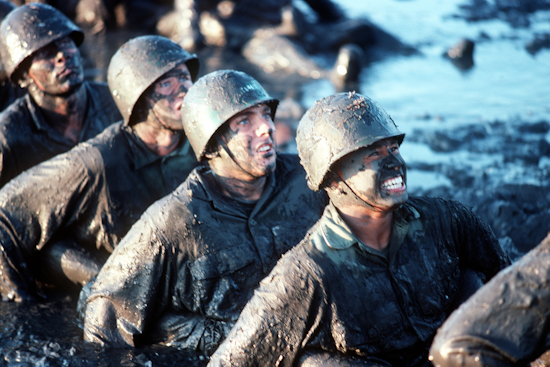
Navy SEALs specialize in maritime operations involving direct action raids and special reconnaissance.
Accordingly, much of the training is tailored to meet these areas of military operations.
Navy SEALs training emphasizes teamwork in nearly every activity or exercise.
These small units depend on each other for safety and protection, which makes building teamwork invaluable.
Moreover, SEAL physical training is daunting and only the first step in the recruitment process.
Candidates must also complete the following training programs:
- Naval Recruit Training (8 weeks)
- Naval Special Warfare Prep School (8 weeks)
- Basic Underwater Demolition BUD/S Training (24 weeks)
- SEAL Parachute Jump School (6 weeks)
- Navy SEAL Qualification Training Program (26 weeks)
Navy SEAL BUD/s Training is especially notorious as is the Qualification Training Program (SQT).
Furthermore, candidates must complete parachute jump school just like recruits for the British SAS.
Then, after the initial training phase (which easily lasts more than 1 year), trainees progress to 1 to 2 years of advanced training.
The advanced training for Navy SEAL Team 6 and other units is even more strenuous.
For this reason, it’s easy to understand why the dropout rate at SEAL training is between 20 to 25% of new recruits.
Navy SEALs have also died in training due to the extreme circumstances.
The rigorous military training features little sleep, brutal physical conditioning, and self-induced hypothermia.
For many, the breaking point is during Navy SEAL Hell Week.
“Hell Week” consists of continual harassment and almost zero rest (less than 4 hours over 5 1/2 days).
Meanwhile, others describe Survival, Evasion, Resistance, and Escape (SERE) training as the point “where some people lose their minds.”
Navy SERE training consists of several stages of advanced survival and evasion techniques.
Then, candidates are put through grueling interrogation situations and what it’s like to experience being a prisoner of war (POW).
Since the terrorist attacks of 9/11, Navy SEALs have also transitioned into more of a land warfare special unit as witnessed in Afghanistan and Iraq.
#5. Navy SEALs vs SAS: Weapons & Gear
It’s not shocking that British SAS and Navy SEALs pack some of the most advanced weapons and tactical gear in the world.
These elite warriors deserve the best in terms of weapons and gear.
For this reason, they are often armed with the latest technological advances as well as signature gear.
British Special Air Service (SAS) operatives are often assigned:
- M16 Assault Rifle
- C8 Carbine Assault Rifle
- Ultra Compact Individual Weapon (UCIW)
- HK MP5 Submachine Gun
- HK417 Sniper Rifle
- AW 50 Anti-Material Rifle
Furthermore, SAS operatives often have a handgun in their arsenal along with other accessories like:
- Body Armor
- Stun Grenades
- Grenade Launcher
- Tear Gas Canister Launcher
Navy SEALs also utilize the top assault weapons and tactical gear, including:
- Sig Sauer P226
- Glock 19 Handgun
- M4 Super 90 Shotgun
- M249 SAW Machine Gun
- M91A2 Sniper Rifle
Navy SEALs also carry explosives and deadly weapons such as:
- AT-4 Rockets
- M-203 Grenade Launcher
- M107 Anti-Material Rifle
The list of British SAS and Navy SEALs weapons and gear is nearly endless.
Related Article – Delta Force Weapons And Gear
Conclusion
In general, it’s simply a matter of personal preference
The two special forces are among the most elite in the world.
Navy SEALs represent one of the most iconic Special Ops forces of all time.
Whereas British SAS operatives are part of a tradition that dates back to WWII with notoriously hard training.
- Replacing Dog Tags: 6 Things You Need to Know - June 28, 2024
- Navy OAR Test Study Guide - June 24, 2024
- 10 Best Sniper Movies of all Time - June 20, 2024
Originally posted on September 8, 2023 @ 5:29 pm
Affiliate Disclosure: This post may contain affiliate links. If you click and purchase, I may receive a small commission at no extra cost to you. I only recommend products I have personally vetted. Learn more.
